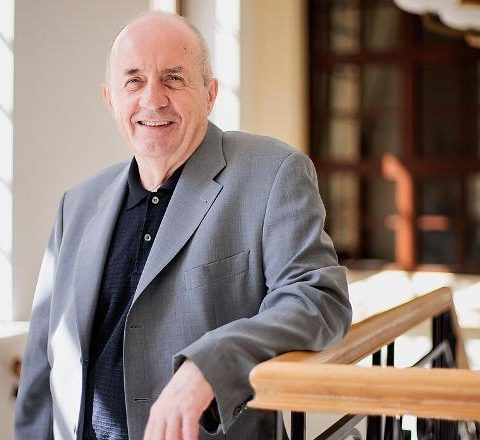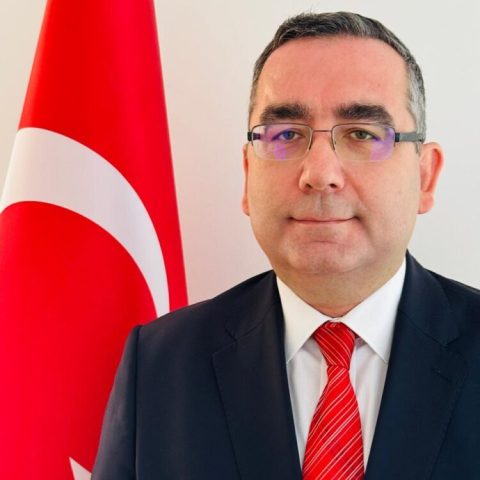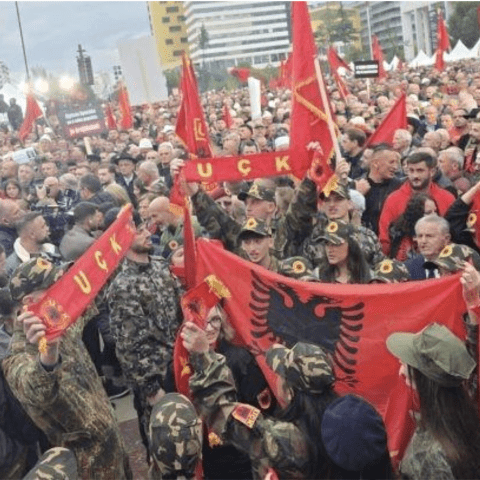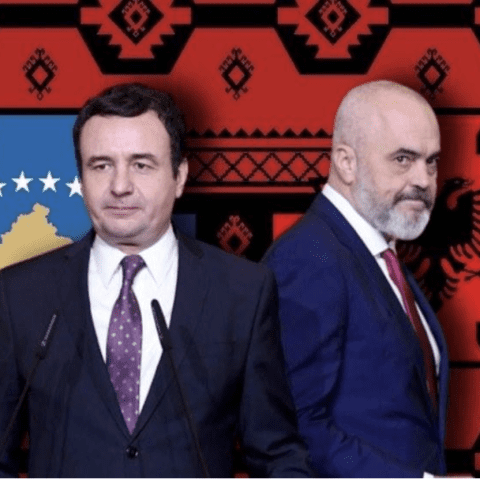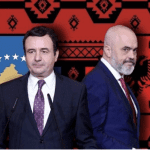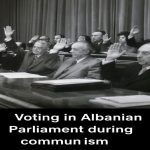By Adrian Klosi
Perhaps very few people have heard of the small rural settlement in the North of The Netherlands known as Makkinga, but there is every chance we will be hearing more and more of this location in the future. Like its provincial brother, Maastricht, Makkinga is becoming a shining example throughout the whole of Europe, which could one day be adopted by the rest of the world at large.
This northern village in The Netherlands has removed all traffic signs and road markings. As items that are no longer required, the stop signs, one way signs, traffic priority signs, cross section lights, parking signs, road signage, the prohibited areas, together with the sign posts and the intersection lights are all piling up in the storage depots of the Town Hall and the local Police Station of Makkinga waiting to be recycled and put to better use than disciplining the public in traffic.
Expectations are high although this project is still in its experimental stages. However, so far, so good, the project ahs been very successful. With feelings of special pride, the Chief of the Traffic Police under the local Town Hall of Makkinga, H. van der VŮexplained before the cameras of a German public television station the idea and system he designed. Drivers, being license holders, know traffic rules only too well. There is no reason for them to violate the white lines on the road, when someone is crossing the road. There is also no reason why they shouldn’t give way to the car traveling along the main trunk when they are coming out of a side road, the driver gives way to the vehicles to his right and goes first before traffic coming from his Left. It is impossible for them not to drive at walking pace when passing children’s playgrounds. It is impossible for them not to give way to the pedestrian or the cyclist, when they are turning left or right and the cyclist is crossing the road. And so it goes onŮthere is no reason why the Traffic Rules should be violated. In many European cities, particularly in the older and more scenic ones, with their greenness, alleyways and historical buildings, people complain about the density of the road signage, the endless stop and start signs. If you walk through a German public garden, you can read signs that say pedestrians are allowed to walk on the grass, but bicycles are prohibited; that owners of dogs and cats must clean after their pets in public parks and deposit this waste in special bags you can find lining the walkways; signs that say you can dump bottles in specially designated rubbish bins to be recycled; bins are emptied at certain hours of the day and never on a Saturday or Sunday, and so on. In other words, sensing sign posts as being things that are unnatural and unnecessary for people of sound reasoning, the public of Makkinga are showing signs of advancing towards emancipation and self discipline and it appears that the rest of Europe is with them. There are two pillars to the system of Mr. van der V: the pedestrian always has right of way; secondly, the people who move around Makkinga make eye contact at the decisive moment. That split second of eye-contact and the understanding is clinched as to who gives way to who. This Chief Traffic Warden in this Dutch province was boasting in vain. It would come as no surprise if he were summoned suddenly to the European Office of Patents and asked to register the ownership of his invention.
Great injustice! He was also wrong when he declared before the cameras, “Ours is the first town in Europe that manages its traffic without road signs.” Naturally, he didn’t know any better, not because he was being mean. He could not have known that the capital city of Albania has long since been managing (or perhaps it would be more accurate to say- conducting,) road traffic and it has been doing this without having the slightest need for the example of a certainŮMakkinga.
In Tirana, and perhaps in the majority of the other cities of Albania, the right hand does not have the right of way before the left hand, when you drive out of a side road, there is no reason why a driver should stop and wait for the pedestrian, the old man with his walking stick, a mother carrying her child across the road, because they are the ones who wait for you, in our capital, a one way street has a meaning only when it is very narrow with enough room for one and a half vehicles, there people can walk down the road on both sides without any problem at all. It is true that there are traffic lights in Tirana, but stopping at a red light is an exception today, because the rules on these streets are that the more powerful vehicles (that is, the big four wheel drive vehicles, police vehicles, politicians’ vehicles, the luxury vehicles of the Mafia etc), shoot through the red lights, the rule being that there are no traffic lights and the exception being, there are red and green lights. In Tirana, drivers don’t stop in front of a sign that says, “STOP,” but they do stop, lights flashing when they have to pop out of the car to do something, they double park and leave their tail lights flashing in the middle of the Rruga of Kavajes or “Rruga e Durresit” and rush off to buy a lottery ticket, or they stop in the middle of the road on noticing a next door neighbor and exchange a few sentences, who, surprisingly has bought the same kind of Mercedes Benz; or they stop to change money with the street dealers in the middle of the boulevard, or outside of Albtelecom etc. etc.
In Tirana there are no signs warning play grounds ahead, because there are no playgrounds, because in the areas where there should be playgrounds, there are only rows and rows of apartment blocs. In Tirana, on the high speed motorways, there are no signs indicating flyovers or overhead bridges, because there aren’t any. Pedestrians perhaps deftly take advantage of cases, when the traffic is so dense that you can meander through it easily, like a lost deer, from one footpath to the other, or when the road is clear (always with the risk of failing to notice a musketeer who hurtles around the corner). At the major roundabouts, like the one at Wilson Square or Zogu i Zi, the pedestrian is non existent, no lights have been envisaged for the pedestrians, even the political battle over Zogu i Zi took place to decide whether or not vehicles were going to drive parallel to one another or at different levels and not to decide whether underground or overhead passes should be inserted for pedestrians. Then why is there any need for road signs? For traffic lights? So the same two principles assume value in Tirana as well, the same as in Makkinga, in other words the principle of priority and the principle of eye contact. With a few differences: in the case of the first principle, it is not the individual who comes first but the vehicle. An individual has two legs and can cross the road only with the good heartedness of the driver. The streets have been built for vehicles, says the brain of the Albanian, driver, whoever crosses them risks their lives. A symbol of this reality is the appearance of the villager who crosses the motorway, straddling the low concrete wall dividing the motorway down the middle, pulling his bags over with one hand and trying to keep his body out of the range of the lightening flashes of the cars as they speed past him on both sides of the barricade going at at least 120 kilometers an hour in the fast lanes. The exact same goes for the second principle; in Tirana, due to the lack of road signs and markings and respect for the occasional bent old sign, obstinately standing there on the side of the road, there is a second of eye contact between driver and pedestrian; the only difference is that whilst in Makkinga, after this quick glance, way is granted to the weaker (and then to the party that actually has right of way), in Tirana it is always the stronger party that gets rights of way (perhaps an exception is made for a pretty girl). The stronger, as we said earlier on, are the big luxury cars like the four wheel drives and the Mercedes Benz-s, mostly stolen, the police cars, and the vehicles of the Mafia with their DR number plates etc. Eye to eye contact and a certain degree of natural good understanding of many people actually results in the fact that there are fewer accidents on the streets of Tirana than could be anticipated. So, in view of the fact that the outcome is almost the same (although we don’t have footpaths, lanes for cyclists, neither underground or overhead passes, nor lanes for coaches or tramways, or playground areas for children), in other words very few victims, why should Makkinga be considered any more advanced than Tirana?
Europe invented all those road signs during the last Century, from signage that catered for traffic with horses and carts and coaches up to modern vehicles of this age. Today, when all the drivers, pedestrians, cyclists have found themselves amongst rules that govern movement on their own, all the different the signs and the signals are becoming superfluous. And this is possible because compassion has not been lost to mankind, on he contrary it has increased.
Tirana went from the mules and pack horses of the Old Bazaar, through an interval of traveling everywhere on a bicycle and packed to the limit urban buses, to the origins of today of owning the most luxurious of vehicles down to the most tin can vehicles on four wheels on the whole continent. In all this cacophony of vehicles, the “strongest” is imposing his will the most and compassion is flying out the window. It is precisely this speed of things that is leading us in the opposite direction from Europe.
The Appropriation of the Albanian Model

Change font size:

